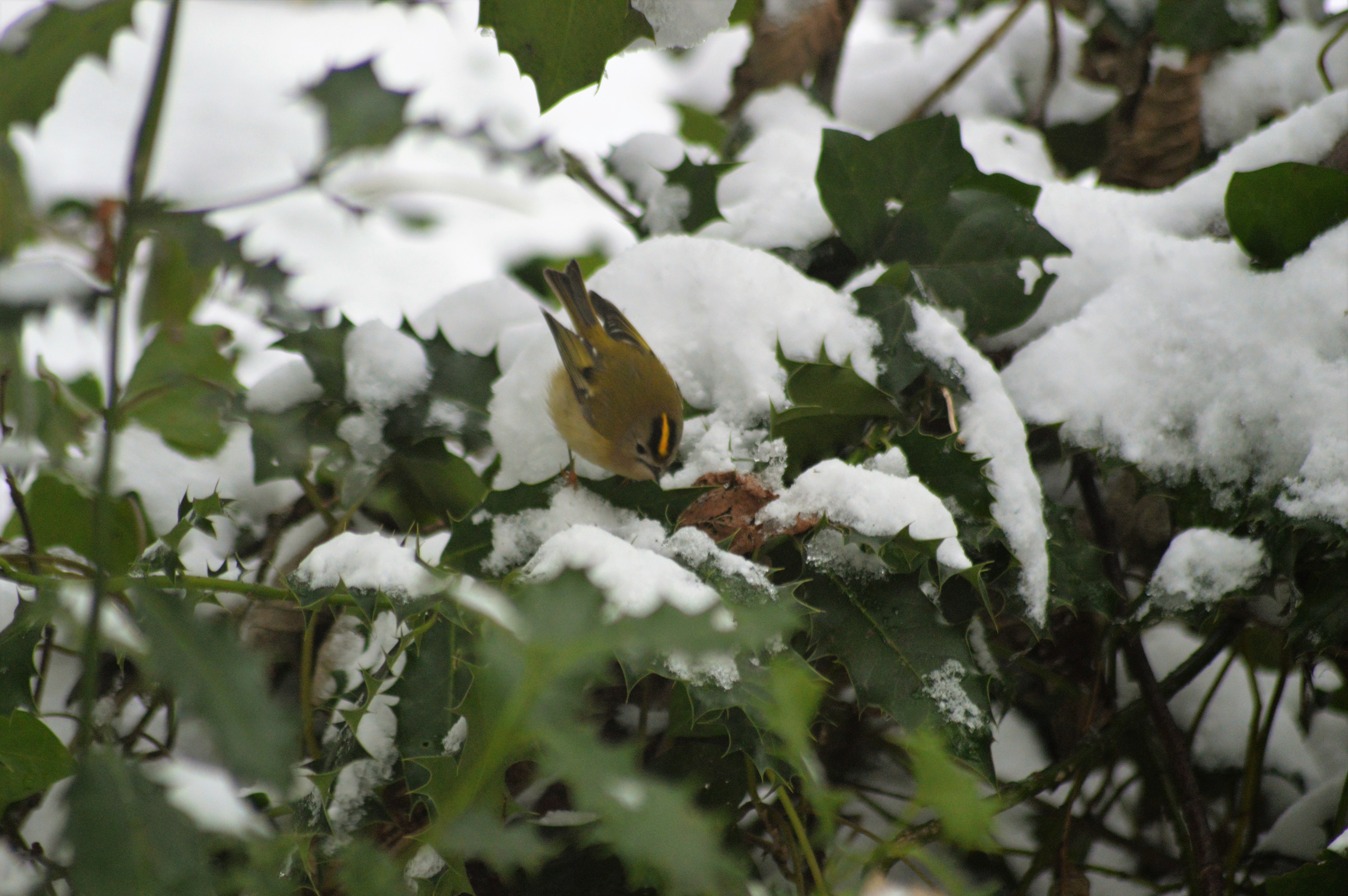I dislike our tendency to name storms and weather fronts almost as much as I dislike our habit of blowing such things entirely out of proportion in this country. Often panicking without justification when snowflakes fall and temperatures decline ever so slightly. That said, the Beast from the East, as it has been labelled by the story-hungry media, has been pretty unique and I cannot remember a time (in my lifetime, at least) when conditions have appeared so overwhelmingly bleak. Indeed, much of this week has been spent huddled in the house, book in hand, hiding from the worst of the weather. Ignorant, some may say, to the happenings in the wider ecosystem outside.
Breaking from the norm, however, yesterday saw me wandering the wilds of my local park – Heaton, in Newcastle – with the aim of discovering the impact of the beast on my local wildlife. It was not a pretty picture. All around yesterday the signs of hardship were apparent: snow blanketed the floor almost a foot deep in places and covering vital food sources, the temperatures sat at an energy-sapping minus two degrees and areas of open water, from puddles to streams, stood frozen and still. The result being that it took some time – half an hour no less – before the first signs of life became apparent amid the icy desolation.
Weather such as this, of the kind raging outside at present, poses a significant threat to many forms of wildlife; though none more so than small birds – the passerines who must feed near constantly in order to sustain themselves and generate enough body heat to see out our frigid Winter nights. When snow falls, food sources are concealed and untold numbers of birds perish. Indeed, it is frightening to think of just how many creatures must surely have died over the past few days. From tiny Goldcrests to thrushes and riparian wagtails, many must surely have met their demise during the beast. In the wider countryside, in our cities and even in our very own gardens.
On the subject of Goldcrests, I had not expected to see any yesterday; though the sight of two birds feeding at ground level atop the snow proved sobering. The tiny passerines, sporting their sunshine yellow crests, hopping deftly over the crystalline surface, appearing to snatch unseen morsels from the ground before scampering up into the lower branches of a Holly. Doubtless in search of the meagre few spiders and other insects not banished by the cold. It was heartening, truth be told, to see the crests persevering in spite of the weather, and amazing to think that such a small bird can survive such inclement weather at all.

Elsewhere in the park, life appeared equally hard for other species of birds. Usually, timid Blackbirds threw caution to the wind as they fed and dug in close proximity to dog walkers – hunger overriding better sense, in this case. Here too, Woodpigeons had gained confidence, joining their feral kin in enjoy scraps from a small child’s sandwich; while an unruly mass of thrushes – Redwing, Blackbird and Song Thrush – squabbled and fought over the scant Cotoneaster berries still adorning a bush towards the Western periphery of the park. One particular Redwing, set apart from the scrum, providing perhaps the most poignant testament to the hardship of the season: unmoving as I approached and appearing sleepy, lethargic. The bird – shown below – seeming spent, sluggish and beaten – waiting on its branch for the inevitable to a happen. A sorry fate for a bird which arrived in this country back in September hoping to escape the rampant weather of Northern Europe.

Departing and leaving the Redwing to its fate – whatever that may be – I wondered what had become of the parks other avian residents. The tits, finches, robins and wrens usually abundant yet strangely absent during the mornings’ foray: I soon found them. A chance wander into a quieter corner of the park revealing a scene of hope. Here, amid a particularly dense tangle of trees, some person, some saint, had placed out bird feeders. Filled to the brim with sunflower seeds, peanuts and other treasures, they had not gone unnoticed by the birds and myriad species fed en masse, vying for position at times yet oddly at ease with each other. Doubtless the result of the harsh conditions.
Here, the most noticeable deviation from the norm came from the Robins: with no less than ten birds feeding in close proximity. Usually territorial, these birds appeared to accept one another, lashing out half-heartedly at times, yet, by large, much more tolerant. Hunger can work wonders for neighbourhood spirit it seems.
Gazing through the throng surrounding the various seed dispensers, it was the diversity of the accumulation that struck me most of all. It appeared that half of the woodland had descended, keen to make the most of this vital food source. Blue and great tits too numerous to count cackled in the upper branches, occasionally dropping down to feed, Dunnock’s snagged spilt seed from the snowy ground in the company of Blackbirds and a male Great Spotted Woodpecker lorded over its preferred feeder, it’s presence deterring the other species who waited patiently on the outskirts. Add to these countless chaffinches, a pair of Stock Dove and singles of Redwing, Nuthatch and Jay, and there was more than enough to keep me enthralled throughout the morning. Though, as ever, my favourites (if I am allowed favourites) were the Bullfinches – three of which dropped in repeatedly during my stay and even posed for a few acceptable photos.








